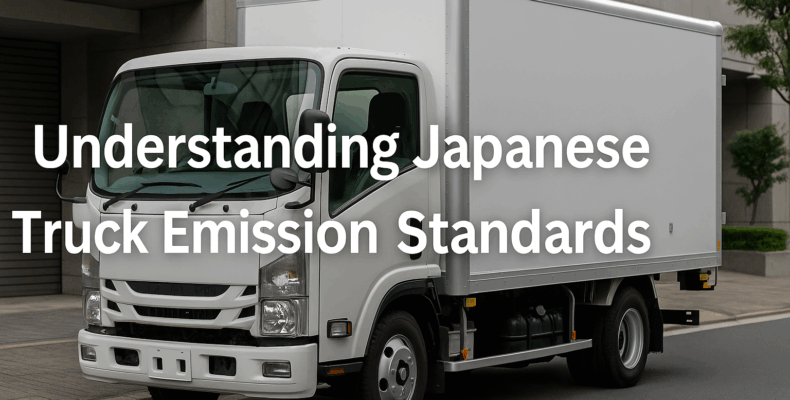If you’re planning to import a Japanese used truck, understanding Japan’s emission standards is essential. These rules not only protect the environment, but they also affect what trucks can be registered and driven in various countries. Fortunately, Japanese emission regulations are known for being strict, which means most trucks from Japan are cleaner and more fuel-efficient than those from many other markets.
In this guide, we’ll break down the key emission categories and explain what overseas buyers should know before making a purchase.
🚚 What Are Japanese Truck Emission Standards?
Japan’s emission laws are designed to reduce air pollution caused by diesel and gasoline engines. These laws are created and enforced by Japan’s Ministry of the Environment and the Ministry of Land, Infrastructure, Transport and Tourism (MLIT).
Over time, the regulations have become stricter. Trucks must now meet strict limits on particulate matter (PM), nitrogen oxides (NOx), and hydrocarbons (HC). This ensures that used trucks exported from Japan are generally clean and well-maintained.
📘 Overview of Key Emission Categories
Here are the most common standards you’ll find when researching or buying a Japanese used truck:
✅ Pre-New Long-Term Emission Standard (Before 2003)
-
Less strict than newer standards
-
Trucks from this era may not be allowed in some countries
-
Usually cheaper, but may require modification
✅ New Long-Term Standard (2003–2005)
-
Introduced tighter controls on NOx and PM
-
Widely accepted in many countries
-
Often labeled as “Japan 2003 Emission Standard”
✅ Post-New Long-Term Standard (2005–2009)
-
Further reduced emissions
-
Trucks usually feature diesel particulate filters (DPF)
-
Better for countries with moderate emissions rules
✅ Japan 2009 Standard (or Heisei 21)
-
Very strict controls
-
Often required for urban driving in strict countries
-
Trucks must pass idling emission tests
✅ Japan 2016+ (Current Standard)
-
Even lower PM and NOx limits
-
Required for registration in many major cities worldwide
-
Most eco-friendly and fuel-efficient models
🔍 How to Identify Emission Standards on a Japanese Truck
Look for the Emission Regulation Category plate inside the driver-side door. It usually contains:
-
Emission compliance code (e.g., “KR”, “PDG”, “TKG”)
-
Year of compliance
-
Engine model number
-
Certification number
You can also verify this info in the Export Certificate or ask your exporter directly.
🌍 Why Emission Standards Matter for International Buyers
Different countries have different import laws. For example:
-
Kenya: Requires vehicles to comply with Japan 2009 or newer
-
UK: Demands Euro 4 or equivalent for trucks
-
Australia: Allows imports under strict emission and safety guidelines
-
UAE: Focuses on engine condition and emission ratings
If your truck does not meet your country’s import standard, registration may be denied—or you may pay high taxes.
🌟 Buy from Trusted Exporters
One of the best ways to avoid emission-related problems is to purchase your truck from a reputable Japanese exporter. Reliable exporters clearly list the emission category and ensure that trucks meet international standards.
👉 Top 5 Trusted Japanese Used Truck Exporters for Global Buyers
These companies provide full documentation, emission details, and after-sale support, helping you import with confidence.
✅ Checklist for Emission Compliance Before Buying
-
Confirm the emission standard label
-
Check the year and engine model
-
Review your country’s import rules
-
Choose a truck that meets or exceeds those rules
-
Ask for full documentation from the exporter
📝 Final Thoughts
Buying a Japanese used truck is a smart decision—but only if it meets your country’s emission and import requirements. By understanding emission labels and choosing the right exporter, you can avoid delays, penalties, and future headaches.
Japanese trucks are known for durability and fuel efficiency. When paired with the right emissions standard, they’re also a great choice for the environment—and for your business.
